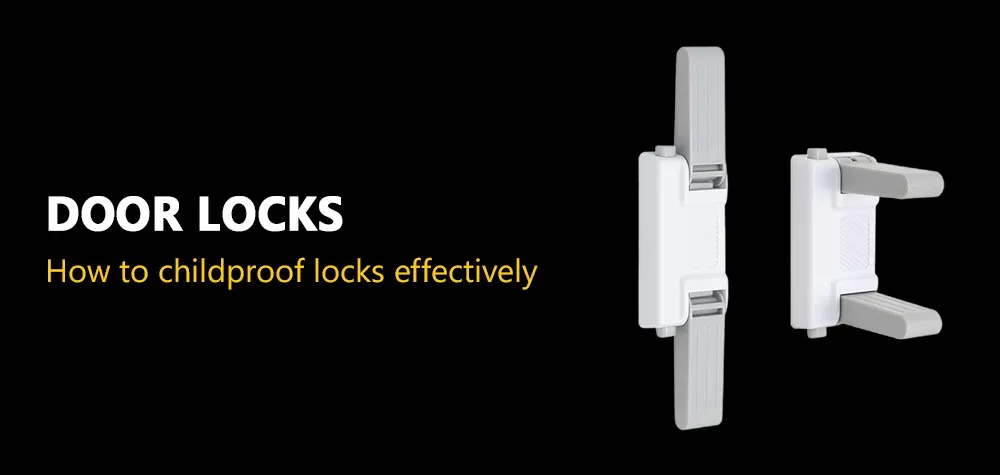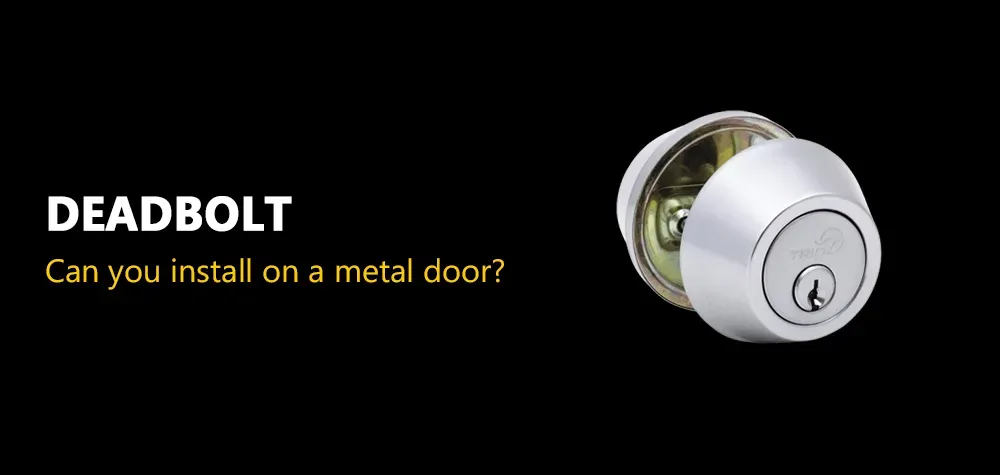15 Home Security Tips Every Homeowner Should Know
In the United States, there are over 2.5 million burglaries every year. Well over half of these occur in homes. When it happens, it can be devastating and invasive. Despite its frequency, it is not inevitable. There are many things you can do to make your house less appealing to home invaders. Keep reading for a list of fifteen home security tips you need to know in order to protect your home.
1. Install Deadbolts on Your Outside Doors
One of the best things you can do to keep intruders out is to lock your doors and windows, even when you are home. But sometimes even that may not be enough.
Often, locks on outside doors are not as strong as you would like to believe. Someone motivated to get inside can kick down the door or force their way in.
There are a few things you can do to reinforce your door to make sure that this doesn’t happen. The best place to start is by installing deadbolts on your outside doors. A deadbolt is a locking mechanism that is moved by a door handle or a key.
A deadbolt is stronger than spring bolt locks because spring bolt locks will move if pressure is applied to the bolt itself. An experienced burglar will know how to prompt a spring bolt lock to move.
Click here to learn more about door locks like deadbolts and to have one installed in your home.
2. Get a Home Security System
Home security systems are a great way to guard your home. against intruders. They will alert you if someone comes in through a door or window while you are not there. Many systems will even go so far as to alert the authorities for you.
This ensures that you can abort home burglaries before the burglars get away with any of your valuables. But did you know that they can also prevent home burglaries?
Burglars will look for signs of home security systems before they try to break in. If you have a home security system, put a sign in your yard or a sticker in your window to show that you are protected. Just publicizing it may save you from ever having to use it!
3. Upgrade to Smart Locks
Upgrading to Smart Locks is another great way to deter burglars and secure your home. Smart Locks eliminate the need for keys entirely. You can control your lock system using a secure keypad.
If you choose a code that others cannot guess, it helps protect your home against even the smartest intruders. Plus, you can lock your home from anywhere. Call our team and we can install a Smart Lock for you today.
4. Light Up Your Outdoor Spaces
Some burglaries happen at night under the cover of darkness. Intruders rely on being able to get up to your door or window unseen. That is why you need to keep your outdoor spaces lit up.
If you don’t like the idea of lights being on in your yard all night, install motion-sensing lights. These lights only turn on if they sense someone outside. If they turn on, you will know that someone is approaching your house.
Often, this feeling of being seen deters burglars before they can even make it to your door.
5. Don’t Leave Your Valuables On Display
It is common for burglars to case a house before they attempt to break in. That way, they know that they can get something valuable from your home. This is why you should make it very hard to case the house.
Big front windows or glass doors may look nice, but it often makes it easy to see into your home from the street. Especially at night. This allows potential burglars to see what goods are in your home.
Don’t leave expensive technology like flat-screen televisions or gaming systems out in the open. Keep irreplaceable valuables in a fire-proof safe.
It also sometimes helps to leave out a decoy in case your house does experience burglars. Leave out some glass jewelry or a few small bills to make burglars think they are getting away with something. This can keep them away from the items you own that are actually worth a lot.
6. Get a Solid Door
Knock on your door. You should be able to tell by the sound it makes whether it is solid or not.
Solid doors are better for guarding against intruders. Hollow doors are easy to drill through, providing entry to the prepared burglar. If you’ve been thinking about replacing your front door, opt for a solid one.
7. Make it Seem Like Someone is Home
A lot of burglaries happen during the day when people are at work or school. Burglars take advantage of the empty house to make their move. So the key is to make it seem like someone is always home.
One good way to do this is with light. Keep your porch light on, or leave a hall light on in your house. Something that can be seen from outside of the home.
You can also install lights that are on a timer within your home. They can turn on and off periodically throughout the day. If someone is outside casing your home, they will think that someone is there flipping the light switch.
You can also stage a scene within your house to make it seem like someone is inside. For example, leave a book open with reading glasses on top of it in your living room. Someone peering through your window will think that you are home and just got up for a second.
8. Secure Your WiFi
Sometimes, technology-savvy intruders will try to hack your WiFi as a way to gain entry into your home. If you have a security system or something that depends on the internet, they can sometimes disarm it by messing with your internet connection.
So if you have any security measures that depend on the internet, make sure you secure your WiFi connection. For help with this, contact your internet provider and ask for assistance.
9. Draw Your Blinds
This may seem like an obvious solution, but keeping your blinds or curtains closed can save you a lot of hassle. Curtains do two things for you.
First, they prevent burglars from properly casing out your home. If they can’t see inside, they don’t know if you have anything worth stealing.
Second, they help obscure whether someone is home or not. If burglars see a light on behind closed curtains, they have to assume that someone is home and out of sight.
10. Stay Off Social Media
Posting everything on social media is normal these days. But intruders often use social media to gain helpful information about which houses to break into.
So there are two types of photos you should avoid posting on social media. First, don’t post pictures of the interior of your home that showcase valuables. This allows intruders to see what you might have and where it is within your home.
Second, you need to be careful about vacation pictures. When you get home from your vacation, post all the photos you want. But if you advertise your vacation before you go, potential intruders know that your house will soon be empty.
Likewise, if you post photos during your vacation and tag your location, intruders know that your house currently sits empty. If you do this, you may come home from vacation to find that your house has been broken into.
11. Install a Security Camera
Installing a security camera is a great way to discourage burglars from entering your home. Put a sign on your lawn or a sticker in your window that advertises your security camera. As soon as burglars see this, they’ll walk away.
And if someone dares to break in anyway, you’ll be able to watch the footage and give a description of the intruder to the authorities. This could prevent a home intrusion from happening to someone else.
Plus, security cameras offer you peace of mind. You can monitor your home from afar, any time of any day.
12. Get Tempered Glass For Your Windows
Do you know anyone who has had their window smashed during a burglary? Burglars smash windows in order to reach through and let themselves in. This is why it is a good idea to get a sturdy glass that is difficult to shatter.
You should choose tempered glass for the windows in your home. This glass is thick and takes a lot of effort to break. If a burglar tries to quietly punch through tempered glass, they will find that their plan has failed.
13. Secure Your Garage
Many homeowners put a lot of care into securing the doors and windows of their home that they forget all about their garage. Garages and sheds are either stand-alone structures or attached to your home. People frequently pay less attention to securing these buildings than their homes.
This is a mistake. If your garage is conjoined with your home, it can be an easy entry point into your house. All a burglar would have to do is break through an unlocked garage door or window, and then they can walk right into your house.
Not to mention the fact that even stand-alone garages and sheds often contain valuables. You do not want a burglar to steal tools, lawnmowers, or recreation equipment from your shed.
The solution is to properly secure your sheds and garages. Try installing Mortise Locks. These High-Security Grade 1 locks feature things like long screws and reinforced plates. These locks will help ensure that your sheds and garages are safe against intruders.
14. Rethink Your Spare Key
A lot of homeowners unwisely leave a spare key in an easy-to-find place. If your spare key is under a doormat or under a flower pot, you need to rethink its placement.
Burglars have practice looking for spare keys. And if you make it easy to break into your house, they will let themselves right inside.
Consider instead leaving your spare key with a neighbor. Or, you can install a lockbox near your front door. Everyone will know where your spare key is, but no one will have the code necessary to access it.
Be as creative as possible with your spare key placement. You should be able to access it, but you don’t want to accidentally grant intruders access to your home.
15. Ask For Neighborhood Help
If you live in a residential neighborhood, you and your neighbors should be united against burglars. If you are heading out of town, ask for your neighbor’s help. Usually, neighbors are happy to house sit for each other.
Have someone bring your paper in, and take your trash out to the curb on trash day. It could even be helpful if they would park a car in your driveway. This helps create the appearance that you are home.
And do not forget to repay the favor! If you and your neighbors keep an eye out for people committing break-ins, you can protect each other’s homes.
Stay Safe With These Home Security Tips
Safety and security start at home. Even though home burglaries are common, they are not unavoidable. With the above home security tips, you can keep yourself and your family safe from burglars.
At Brothers Locksmith, our team is devoted to protecting homes in the Austin area. If you need reliable, safe locks, we can help. Reach out to us today to upgrade your locks!
Call Us Any Time!



